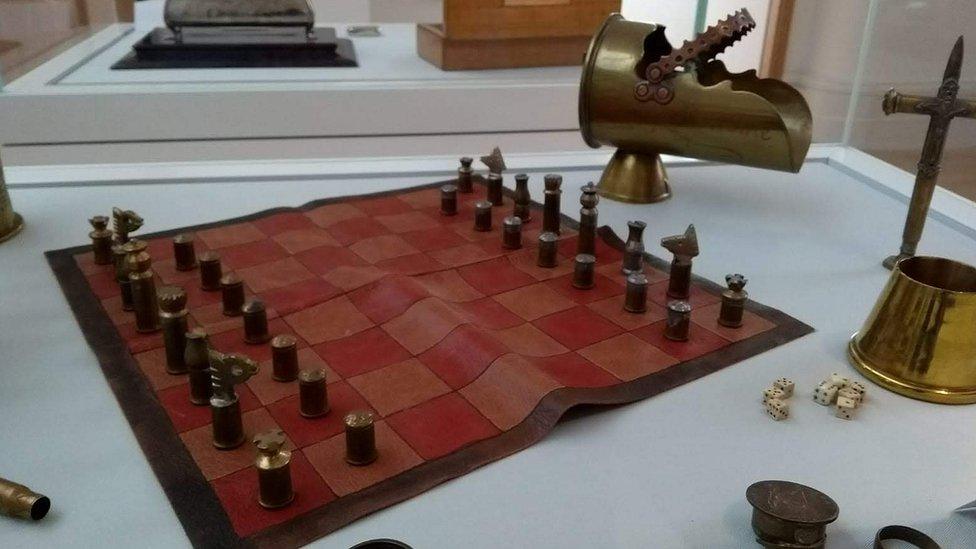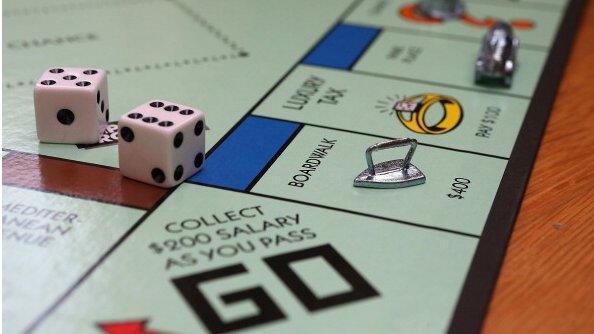Medieval chess piece part of St Albans games exhibition
- Published

A 12th Century chess piece was found during excavations for a shopping centre in the late 1980s
A 12th Century chess piece found in St Albans is among more than 100 games artefacts going on display in the city.
The knight joins other items as part of Game Plan - a major exhibition visiting from London's V&A Museum of Childhood.
Board games from the past 200 years include recent favourites such as Mousetrap, Cluedo and Monopoly.
The display marks the "joy and frustration" of playing them, a St Albans Museum & Gallery spokeswoman said.
The exhibition presents games from the V&A's collection and this is the last chance to see them before the Bethnal Green-based museum puts them back in storage.

The Game of the Goose is generally regarded as the prototype of "race-style" board games, such as snakes and ladders, and first came to England in 1597
"This vibrant exhibition celebrates the joy, excitement and occasional frustration of playing board games," the museum spokesman said.
The 5cm tall chess piece, made of red deer antler, was found on Chequer Street during excavation when The Maltings shopping centre was built in the late 1980s.
Museum curator Sarah Keeling said pieces of similar design, pre-dating the St Albans one, had been found in other parts of the world.
Chess originated in India and was "still new to the UK" in the 12th Century.
"It's one of our star objects," she said.
"St Albans Abbey was a prime site of pilgrimage so the guess is that it was dropped accidentally by a visitor as it was the only piece they found."

Happy Families seemed to be merely known as Family Cards in the 19th Century

People voted for St Albans to be in the Mayfair spot in the Monopoly: UK Here and Now edition

Trench art from World War One which made its way back to St Albans is on display
Ms Keeling said evidence games had been played in the area from the Iron Age onwards made the city an appropriate place for the exhibition.
"A chequer board was found in an iron age settlement just outside the city and Roman gaming tokens have been found in Verulamium [the Roman town to the south west of modern-day St Albans]," she said.
"We always say you can see 2,000 years of history in St Albans and board games go back all that way as well."
Game Plan will be at the museum until 3 March.

Gaming tokens were used in family gambling games in the 1830s instead of money

The exhibition in the Weston Gallery at the St Albans Museum and Gallery presents games from the V&A's national collection

There are lots of opportunities to play and the exhibition itself is laid out as a game, where you spin to decide where you will start
- Published8 June 2018

- Published3 June 2018

- Published8 November 2017

- Published12 September 2015

- Published23 February 2015

- Published22 April 2012
